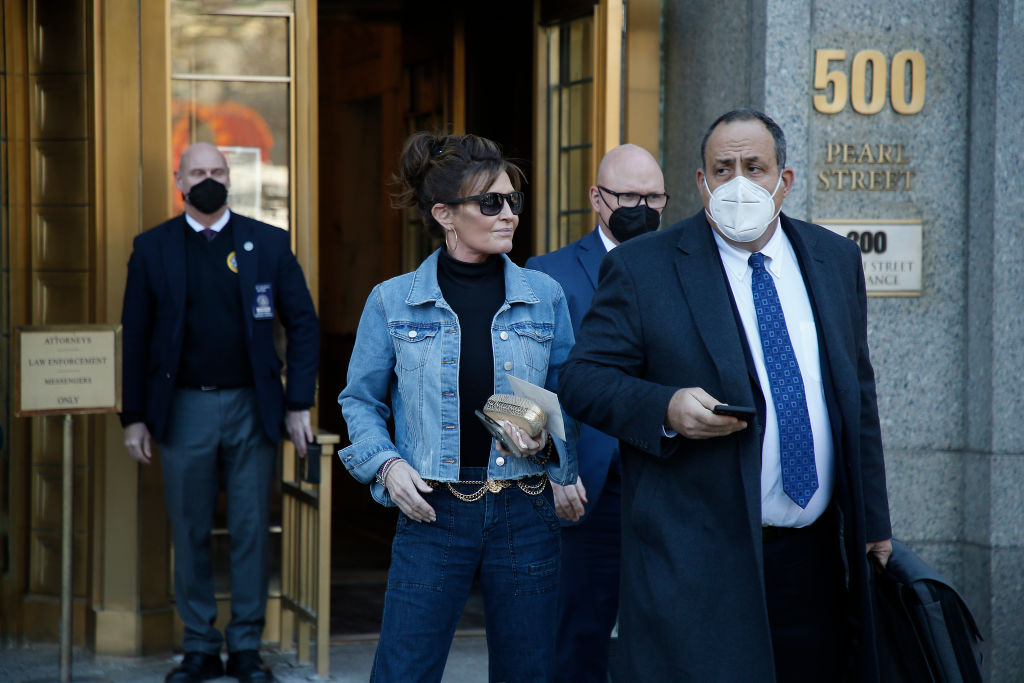
Late last month, Sarah Palin filed the next salvo in her long-running defamation suit against The New York Times. In February, the former Alaska governor failed to convince a federal court that the Times libeled her in a June 2017 editorial. But her appeal of that decision goes beyond her own case. Palin is trying to take down a landmark 1964 Supreme Court ruling that protects the press by requiring a public official who sues for libel to prove that the defendant knew or strongly suspected a published statement to be false. “The rule,” Palin’s brief reads, “is obsolete in the modern speech landscape” where the rise of the internet, she claims, has made it easier to defame.
Palin may believe that the sacred temple of American defamation law, New York Times v. Sullivan, is set for ransacking. Former President Donald Trump pledged to “open up” libel laws in 2016 before filling the federal bench with conservative judges. Last year, Supreme Court Justices Clarence Thomas and Neil Gorsuch separately called for the high court to revisit its 1964 ruling in Sullivan, sparking renewed hope among the decision’s opponents of a judicial retreat from its protections. And this summer’s abortion rights ruling in Dobbs v. Jackson Women’s Health Organization showed the Supreme Court is capable of overturning decades of precedent.
But six years since Trump’s comment, and despite Thomas and Gorsuch’s musings, there’s little appetite for their views on the federal judiciary—even among judges Trump named to the bench.
The Reporters Committee for Freedom of the Press has reviewed more than 100 rulings citing Sullivan that were authored or joined by a Trump-appointed judge. Of all the judges in all these cases, only Justice Gorsuch has shown a desire to reconsider the decision, saying that a shifting “media landscape” may warrant weakening its protections. Other Trump-appointed judges have routinely applied Sullivan. This makes sense because Sullivan is the law of the land, but the forcefulness of judges’ affirmation of the Sullivan standard—known as the “actual malice” rule—is noticeable.
The central rationale for the actual malice standard is that journalists shouldn’t face penalties for good-faith mistakes when covering public officials and public figures (to whom the rule was extended in a later case). The potential for such penalties might deter them from holding powerful people to account for fear of ruinous libel judgments—the so-called chilling effect.
Ruling last year in former Virginia Lieutenant Governor Justin Fairfax’s suit against CBS, for instance, Judge Allison Jones Rushing of the U.S. Court of Appeals for the Fourth Circuit stressed that “we must tolerate and even shield some erroneous publications in the realm of public affairs because ‘the stake of the people in public business and the conduct of public officials is so great that neither the defense of truth nor the standard of ordinary care would protect against self-censorship.’”
In a 2018 case in the U.S. District Court for the District of Columbia, Judge Trevor McFadden likewise emphasized that “free debate inevitably leads to some mistaken statements[,] and punishment of these statements would chill the freedom of speech.” Earlier this year, two Trump-appointed judges on the U.S. Court of Appeals for the Second Circuit—the court that is set to hear Palin’s appeal—upheld the dismissal of a defamation claim against The New York Times because the plaintiff failed to satisfy Sullivan. And a Trump appointee in Atlanta dismissed the Trump campaign’s own lawsuit against CNN for an opinion piece related to Russia, finding that the campaign’s claims of actual malice were “conclusory.”
Then there is Justice Brett Kavanaugh, who, as a judge on the D.C. Circuit, offered a spirited defense of the actual malice rule, explaining that it works “[t]o preserve First Amendment freedoms and give reporters, commentators, bloggers, and tweeters (among others) the breathing room they need to pursue the truth.”
What is true among the Trump appointees is largely true on the bench as a whole, across ideologies. Unlike the fall of Roe v. Wade—which followed a concerted decades-long campaign to carve away at the 1973 abortion rights precedent—genuine opposition to Sullivan’s unanimous holding is rare. That’s in part because Sullivan protects voices on both the left and the right from the enormous chilling effect that Justice Thomas’s originalism might reimpose by reverting to anachronistic standards of libel law that were followed in Georgian England.
But even if Palin is unlikely to find enough allies in federal courts to change any First Amendment textbooks, we must remain vigilant in defending the vitality of Sullivan, particularly at a time of intense partisanship around press rights and the role of the courts. While the prominent Sullivan detractors, at least today, are Republicans, protecting the First Amendment is not a Democratic project, but a democratic one. Indeed, Justice William Brennan’s opinion for the Court in Sullivan is a civics lesson in democracy. Strong protections against defamation are not grounded in the media landscape, which is always changing, but in the nature of our self-government, which we hope is enduring.
More Must-Reads From TIME
- The 100 Most Influential People of 2024
- Coco Gauff Is Playing for Herself Now
- Scenes From Pro-Palestinian Encampments Across U.S. Universities
- 6 Compliments That Land Every Time
- If You're Dating Right Now , You're Brave: Column
- The AI That Could Heal a Divided Internet
- Fallout Is a Brilliant Model for the Future of Video Game Adaptations
- Want Weekly Recs on What to Watch, Read, and More? Sign Up for Worth Your Time
Contact us at letters@time.com